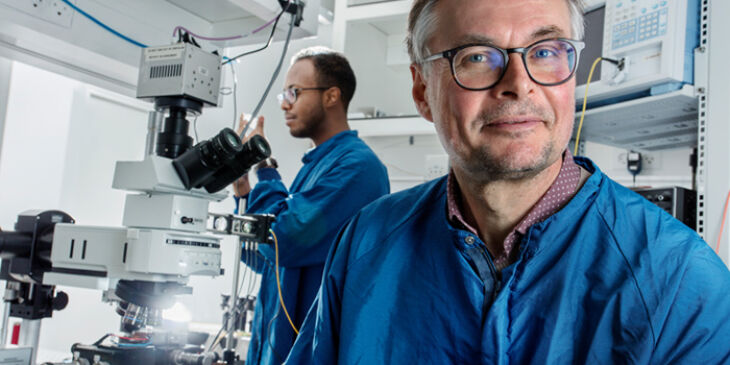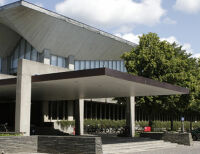Monday 07 Mar 22
The European Research Council (ERC) awards Proof of Concept Grants to researchers with ideas on how to explore business opportunities, prepare patent applications, or test the viability of an idea.
A completely new type of detector for decoding data transmitted using laser light can help break current speed limits on the Internet.
Researchers at DTU’s basic research centre NanoPhoton have invented a new type of detector that can break the limit of data transmission speed internally between the servers in data centres.
The detector will decode data transmitted by light, and the project will be realized through an ERC Proof of Concept Grant of approx. DKK 1.1 million, awarded to Professor Jesper Mørk and his research team in early 2022.
70 per cent of the global Internet traffic takes place in data centres, where servers work together to deliver what we demand via the Internet, whether it is a Netflix series, the website of a cat shelter and welfare organization, or search results on ‘what is photonics?’.
The cooperation between the servers requires that they are internally connected and can collect and exchange the data demanded. This is known as intra-data centre communication, and this is where the new detector can make a difference, says postdoc Dagmawi Alemayehu Bekele, DTU Fotonik, who will head the further development of the new detector.
“With our detector, we can contribute to achieving even faster data transmission internally in the data centres. For consumers, this will mean that they will have greater benefit from their broadband connections, and they will experience ever lower response times on the Internet,” says Dagmawi Alemayehu Bekele.
The demand for high internet speed is constantly rising and becoming increasingly important as more people and devices (Internet of Things) are connected to the Internet, while the demand for both film and video streaming is growing, and more virtual reality platforms are appearing.
Global Internet traffic was estimated at around 235 exabytes (EB) per month in 2021. This is a data volume equal to the continuous streaming of a video in HD for approximately 9.3 million years. Or that every single citizen in the city of Aalborg streamed a video in HD nonstop from birth to death.
Exploiting physical phenomenon
The detector will decode the laser light using a physical phenomenon called Fano resonance, which was first identified in quantum mechanics and which is why the new detector is called a fano detector.
Dagmawi Alemayehu Bekele
"For consumers, this will mean that they will have greater benefit from their broadband connections, and they will experience ever lower response times on the Internet."
The fano detector will decode data transmitted by laser light that is coherently modulated. This is a well-known technique for utilizing several of the different properties (amplitude, phase, and polarization) of light for data transmission. The conventional technology used in current data centres only utilizes one property of light—its intensity—to transmit data. In other words, coherent modulation can be used to ‘pack’ the light with more data than today. And with the fano detector, it becomes possible to ‘unpack’ the data again.
The limit for how much data we can transmit today using the current technology is 800 gigabits per second, and there is presently no technology on the market that can provide higher speeds. According to Dagmawi Alemayehu Bekele, the ambition is to make this possible with DTU’s new fano detector:
“If we succeed in developing a solution where we combine data sent with coherently modulated laser light at one end with our fano detector to decode the light again at the other end, it will be possible to break the limit of 800 gigabits per second.”
Greener Internet consumption
The fano detector will even contribute to making our Internet consumption greener. Global data centre demand for electricity is expected to increase from 210 TWh in 2015 to 3,200 TWh by 2030 (TWh stands for terawatt hour, which is 1 billion kilowatts an hour). By 2030, data centres are expected to handle 8 per cent of the global electricity demand.
“We expect the fano detector to be 40 per cent more energy efficient, mainly because you don’t have to use as many lasers for the actual data transmission, because we can send data more efficiently when we have a fano detector for decoding. This also means that the detector will help reduce heat development in the data centres, thus also reducing the need to use energy for cooling in the data centres,” says Dagmawi Alemayehu Bekele.
The researchers have already taken the first steps towards the realization of the new detector.
“We’ve already tested the principles behind our fano detector on a first-generation photonic silicon chip, and the results look really promising,” says Dagmawi Alemayehu Bekele.
The research team expects the first prototype of the fano detector to be ready for presentation to the outside world by the end of 2022.
















